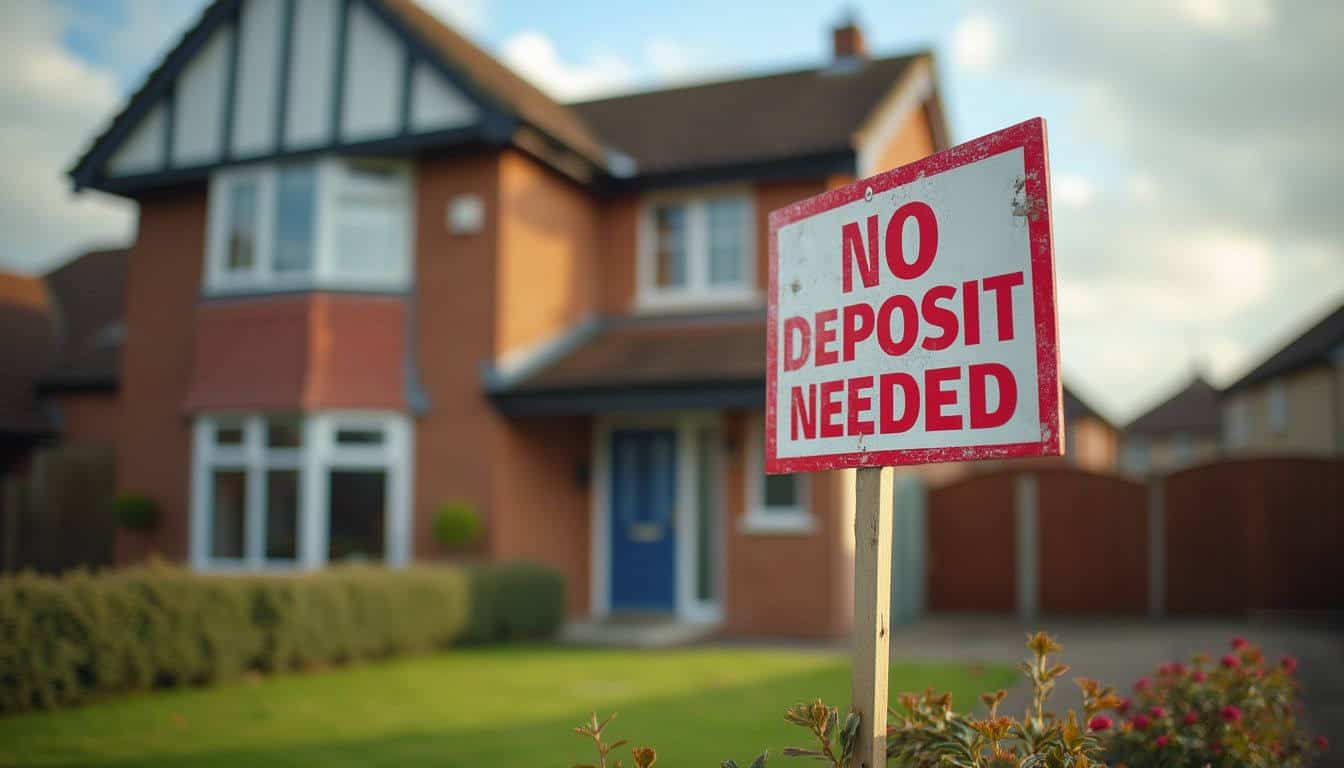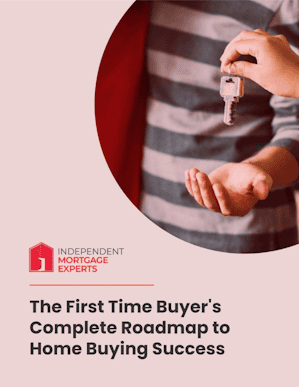Still paying your landlord’s mortgage instead of your own?
With escalating rents and a cost of living squeeze, saving for a mortgage deposit can feel nearly impossible.
The good news is that if you’ve been reliably paying rent for the past 12 months and have a good credit score, you might already qualify for a 100% mortgage.
What is a 100% Mortgage?
A 100% mortgage is a type of loan where the borrower can finance the entire purchase price of a home without requiring any upfront deposit.
This is particularly appealing to first-time buyers who may struggle to save the typical 5% to 20% deposit required by most lenders.
Also known as no deposit mortgages, they were more common before the 2008 financial crisis, when lenders offered them more freely. However, following the crisis, the Financial Conduct Authority (FCA) implemented stricter lending rules to reduce risks, making such mortgages much harder to obtain.
Today, while they are still available from a small number of lenders, they come with specific eligibility criteria and conditions.
How Does a No-Deposit Mortgage Work?
As the name suggests, the main difference between a standard and 100% mortgage is the Loan-to-Value ratio.
With a no deposit mortgage, the LTV or Loan-to-Value ratio is 100%, meaning the loan amount is equal to the property value.
The main concern for lenders, is the risk of negative equity if property prices were to fall. This means that the security against the loan, your home, could be worth less than what you owe them.
This elevated risk impacts various aspects of the mortgage terms and approval process, including higher interest rates, stringent affordability checks, and specific property conditions:
Higher Interest Rates
One way lenders try to reduce their risk is to charge higher interest rates on no deposit mortgages.
Of course, higher mortgage rates mean higher repayments and a substantial increase in the total cost of borrowing over the full mortgage term.
This is why it’s important to compare the long term costs and benefits of 100% mortgages against other options to make sure it’s the best choice for you.
Stringent Affordability Checks
Another way lenders reduce the risk of not getting their money back is to conduct thorough affordability checks on borrowers to ensure they can manage the mortgage repayments.
This includes assessing credit history, income, existing financial commitments such as rental payments, and potential future changes in circumstances.
Specific Property Conditions
Again, due to the higher risk of negative equity, lenders may exclude certain types of property they believe could be more impacted by a reduction in property prices, such as flats or new build homes.
Benefits and Risks for First-Time Buyers
While no-deposit mortgages can provide a lifeline for first-time buyers struggling to save for a deposit, they come with inherent risks and challenges which should be carefully considered.
✅ Benefits |
❌ Risks |
|---|---|
| No Need for a Deposit: Eliminates the need for a deposit, beneficial for first-time buyers who may struggle to save the typical 5% to 20% deposit. | Higher Interest Rates: Often come with higher interest rates due to the perceived higher risk by lenders. |
| Faster Entry into the Property Market: Enables quicker entry into the property market without saving for a deposit, advantageous in a rising market. | Negative Equity: Potential to owe more than the property’s value if prices fall, restricting future moves or re-mortgaging options. |
| Potential for Homeownership: Offers a path to homeownership for those with stable incomes but lacking savings. | Stricter Eligibility Criteria: Typically requires a strong credit history and proof of consistent rental payments, limiting accessibility for some buyers. |
| Preservation of Savings: Allows buyers to maintain their savings for other expenses like home improvements or emergencies. | Limited Availability: Few lenders offer 100% mortgages, reducing options and potentially less competitive terms and conditions. |
Who Offers 100% Mortgages?
At the time of writing, Skipton Building Society is the only UK lender offering a true 100% mortgage deal that covers the full purchase price.
Skipton Building Society
Skipton’s Track Record Mortgage allows first-time buyers to borrow up to 100% of the property value without needing a deposit.
To qualify, applicants must demonstrate a strong rental payment history (at least 12 months), have a good credit history and the monthly mortgage payments must be equal to or lower than the average of the last six months’ rent.
Due to the risk associated with 100% lending, the interest rate is higher than for mortgages with a lower loan-to-value.
Alternative Mortgage Products
Barclays Family Springboard Mortgage
-
Allows first-time buyers to secure a mortgage with a family member’s deposit held in a savings account.
-
Requires a family member to deposit 10% of the property value as security.
Halifax Family Boost Mortgage
-
Similar to Barclays, requires a family member to contribute a deposit.
-
Aimed at first-time buyers needing family support.
Yorkshire Building Society £5K Deposit Mortgage
-
Offers a mortgage with a small deposit requirement, allowing for a loan-to-value (LTV) up to 99%.
-
Only available to first-time buyers.
Due to the nature of the market, these mortgages may only be available for a limited time, as products and eligibility change frequently.
The Application Process
The application process for a 100% mortgage involves several key steps which rely on thorough preparation.
Speaking with a mortgage broker first can make the whole experience easier, shorter and increase the chances of approval. They can guide you through the application, recommend lenders likely to approve your mortgage, and help you assemble the necessary documentation.
The process can be intricate, but with the right preparation and support, securing a mortgage first time is achievable.
Step 1: Prepare Documentation
Gather necessary documents, including proof of identity, income, and outgoings. Lenders typically require original or certified copies of documentation.
Step 2: Check Credit Scores
Review your credit report to ensure there are no surprises that could affect your application. This step is crucial, as lenders will assess your creditworthiness.
Step 3: Get a Decision in Principle (DIP)
Apply for a Decision in Principle (DIP) to find out how much you could borrow. You may need a DIP to make an offer on a property.
Step 4: Submit Your Mortgage Application
Once you have all the necessary documentation and have consulted with a mortgage adviser, you can submit your application. Be prepared for the lender to conduct a thorough assessment of your financial situation, affordability and the property you wish to purchase.
Step 5: Get Your Mortgage Offer
The lender will value your chosen property and check your credit history. If everything is in order, you will receive a formal mortgage offer.
Step 6: Complete
Once the legal work is complete, you’ll exchange contracts and set a completion date. This is when you’ll get the keys to your new home.
Shared Ownership as an Alternative to 100% Mortgages
While 100% mortgages offer a way to purchase a home without a deposit, shared ownership is another viable alternative that can make homeownership more accessible and affordable for first time buyers.
Shared ownership is a government-backed scheme designed to help individuals who cannot afford to buy a home outright.
Under this scheme, buyers purchase a share of a property, typically between 25% and 75%, and pay rent on the remaining share owned by a housing association, local council or developer.
Over time, buyers have the option to purchase additional shares, a process known as “staircasing”, until they own the property outright.
How Does Shared Ownership Work?
-
Initial Purchase: Buyers purchase a share of the property, which requires a smaller mortgage and deposit compared to buying the entire property. The deposit is typically a percentage of the share being purchased, making it more affordable.
-
Rent Payments: Rent is paid on the remaining share of the property. The rent is usually set at a reduced rate compared to the market rate, making it more affordable for buyers.
-
Staircasing: Buyers can increase their ownership share over time by purchasing additional shares. This can be done in increments, allowing buyers to gradually own more of the property as their financial situation improves.
-
Selling the Property: If buyers decide to sell, they can sell their share or the entire property if they have staircased to 100% ownership. The housing association typically has the first right to find a buyer for the share.
Is a 100% Mortgage Right for You?
100% mortgages can provide a pathway for first-time buyers to get on the property ladder without the burden of saving for a deposit.
However, they come with specific eligibility criteria and risks, which could impact your finances for years, including higher interest rates and the possibility of negative equity.
It is crucial for prospective buyers to weigh their options carefully and consider seeking professional advice from a mortgage adviser to explore the best options available.
If you’re considering applying for a mortgage, try our Mortgage Ready Quiz first to check if you’re fully prepared to start the process.
YOUR HOME MAY BE REPOSSESSED IF YOU DO NOT KEEP UP REPAYMENTS ON YOUR MORTGAGE.



